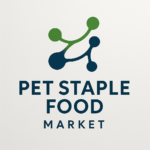Pharmaceuticals Glass Vials Market Overview
The global pharmaceuticals glass vials market is experiencing substantial growth, with a market size estimated at around USD 14–15 billion in 2024. Projections suggest the market will reach approximately USD 22–25 billion by 2032, registering a Compound Annual Growth Rate (CAGR) of 6–7% over the forecast period. This growth is underpinned by several macroeconomic and industry-specific factors, most notably the continued rise in biologics, vaccines, and injectable therapies.
One of the primary drivers of this market is the growing global demand for injectable drugs. These include vaccines, insulin, cancer treatments, autoimmune disease therapies, and monoclonal antibodies. Injectable formulations require high-quality, inert, and contamination-resistant packaging, which makes glass vials an ideal choice. Glass offers chemical resistance, high dimensional stability, and the ability to preserve drug efficacy over time.
The rise of biologics and biosimilars has further propelled demand for high-grade vials, particularly those made of Type I borosilicate glass. These drugs are highly sensitive to temperature, pH, and contamination. As a result, packaging must meet stringent regulatory requirements to ensure safety and stability.
Another contributing factor is global vaccination efforts. While the COVID-19 pandemic triggered an extraordinary surge in demand for vaccine packaging, the legacy of this surge continues. The experience highlighted the importance of scalable, efficient, and sterile fill-finish operations, boosting investments in glass vial production infrastructure worldwide.
Moreover, stringent regulatory guidelines in developed regions push pharmaceutical companies to adopt packaging solutions that offer traceability, tamper evidence, and sterility assurance. This, in turn, accelerates the demand for precision-engineered glass vials.
Technological advancements in glass manufacturing, such as surface treatment, delamination resistance, and improved molding techniques, have made vials more reliable, break-resistant, and compatible with automated filling lines. These improvements are crucial to reducing product waste and downtime in pharma production facilities.
Environmental sustainability is also emerging as a factor shaping the market. Although glass is recyclable, its production is energy-intensive. Efforts are ongoing to develop lightweight vials and incorporate energy-efficient methods to reduce the carbon footprint of pharmaceutical packaging.
Looking forward, emerging economies, particularly in Asia-Pacific and Latin America, are expected to play a pivotal role in market expansion. These regions are investing heavily in healthcare infrastructure and local drug manufacturing, increasing the demand for pharmaceutical packaging solutions, including glass vials.
In summary, the pharmaceuticals glass vials market is evolving quickly, supported by therapeutic innovation, regulatory compliance, sustainability concerns, and increased global health awareness.
Pharmaceuticals Glass Vials Market Segmentation
The market can be segmented based on Type, Glass Material, Capacity, and Application. Each segment contributes uniquely to the overall dynamics of the industry.
1. By Type
a. Injection Vials: These are the most commonly used vials for storing injectable drugs. They are designed to hold single or multiple doses of sterile liquids, including vaccines, antibiotics, and hormones. Due to the sterile nature of these formulations, injection vials are made from Type I glass and are often pre-sterilized or sterilized before filling.
b. Lyophilization Vials: Also known as freeze-drying vials, these are specifically designed to handle the lyophilization process. Many biologic drugs are freeze-dried to maintain stability and shelf life. These vials must withstand extreme temperature fluctuations and vacuum conditions during freeze-drying.
c. Diagnostic Vials: Used in laboratories and diagnostic centers to store reagents, serum, and specimens. Though not always in direct contact with critical drugs, these vials still need to adhere to strict material purity and transparency standards for visual inspection.
d. Serum Vials: These are used for sample collection, blood storage, or reagents in research and development. They often feature rubber stoppers and aluminum seals for secure closure, making them compatible with automated filling machines and sample handling systems.
This segmentation reflects the expanding uses of glass vials beyond therapeutics, into diagnostics, R&D, and biotech labs, highlighting their versatility in modern medicine.
2. By Glass Material
a. Type I Borosilicate Glass: This is the highest quality glass used in pharmaceutical packaging. It offers superior chemical durability, thermal resistance, and inertness, making it ideal for sensitive injectables like biologics and vaccines. This type of glass dominates the high-end market and is critical for compliance in regulated markets.
b. Type II Glass: Essentially soda-lime glass that has been treated to improve its chemical resistance. It is used for less reactive drugs or those not intended for long-term storage. While not as chemically robust as Type I, it offers a cost-effective alternative in non-critical applications.
c. Type III Glass: A basic form of soda-lime glass that is less resistant to chemical interaction. It is used mainly for oral medicines or drugs with lower sensitivity. While declining in pharmaceutical usage, it still finds application in non-injectable product categories.
d. Amber Glass: This glass includes iron, sulfur, and carbon to give it a brownish color, which blocks ultraviolet (UV) light. It is essential for photosensitive drugs, protecting them from degradation and preserving efficacy.
Each type serves a specific need based on drug composition, intended shelf life, and regulatory compliance. While Type I remains the gold standard, the others are vital for less demanding or budget-sensitive applications.


